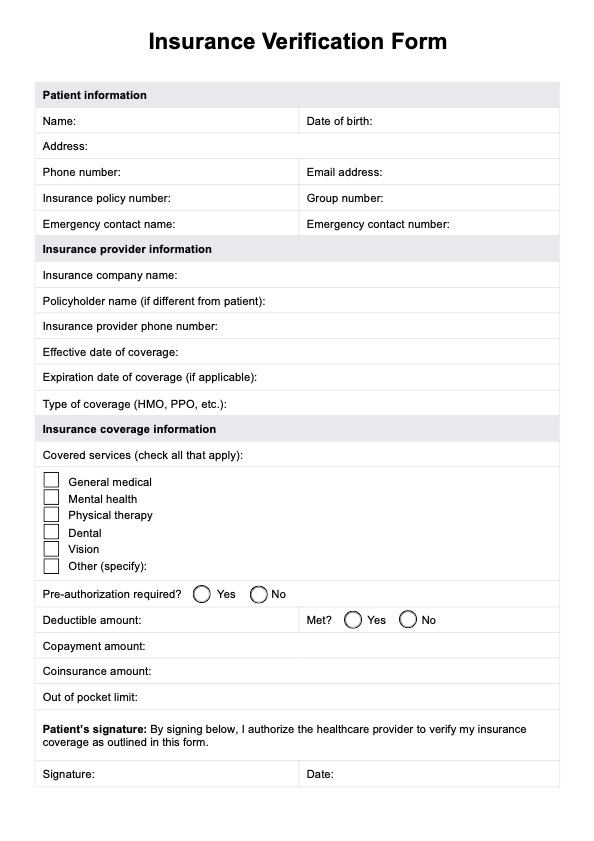The form asks for essential personal and insurance information, including the patient's policy number, group number, and contact details. This helps to validate coverage and streamline the insurance verification process.

Insurance Verification Form
Implement our insurance verification form template within your healthcare practice to elevate your processes. Intuitively designed, the form will save you time while improving data accuracy for reliable information input.
Insurance Verification Form Template
Commonly asked questions
Once the form is filled out and returned, you can access the patient's insurance information and contact the provider to determine if their services are covered under their plan.
Yes, you can fill out the insurance verification form electronically or print it to complete manually. Either method allows for easy submission and quick validation of the patient's policy information.
EHR and practice management software
Get started for free
*No credit card required
Free
$0/usd
Unlimited clients
Telehealth
1GB of storage
Client portal text
Automated billing and online payments











